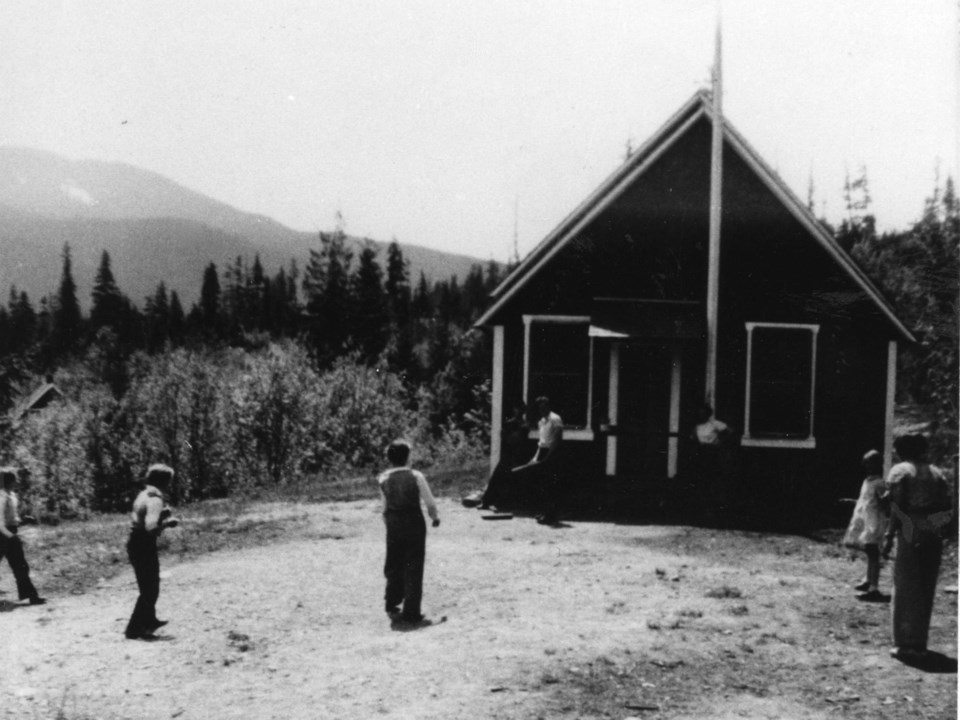Before the ski resort brought power and paved roads to the valley, and it was renamed Whistler, Alta Lake was a relatively small and remote town. Without developed roads it could be hard getting around, and residents from opposite sides of the valley rarely crossed paths. One thing that would bring the community together, however, was the Alta Lake dances. While the music and location of the dances varied over the years, fond memories are recounted by many people who visited or called Alta Lake home.
Fred and Elizabeth Woods lived in Alta Lake with their children from about 1926 until the 1940s, and during this time their family band was the staple entertainment at dances and community events. Dances featuring the Woods family band helped raise money for the first Alta Lake School, which children Helen, Pat, Jack and Kenneth Woods attended. When the one-room schoolhouse was built in the 1930s, it doubled as a community hall where regular dances continued to be held.
Pat Woods was quite young when he started playing at the Alta Lake dances with his family. “We used to load the toboggan with the guitars, accordion, and a violin,” he remembered. “We’d ride the toboggan down to the dance hall, play crib, then make some music. We weren’t very old then, but everybody was up dancing. We were nine or 10.”
School desks were pushed to the side for the dances, and really young children would sleep through the event under the desks. The schoolhouse, like most buildings, was lit by coal oil lamps. When the “home waltz” started and the lamps turned off, it was time to bundle up and head home.
Kenneth Farley’s family came to Alta Lake in 1943 after the Woods family band had moved on. “The music was the wrangler,” recounted Kenneth. “The Philips’ wrangler looked after the horses. He played a fiddle and he would keep the time with the heel of his cowboy boots to set the pace, while the whisky in his back pocket would be sloshing away. You didn’t need to be able to dance, because it was so crowded you could hardly move.”
For those living along the lake, the festivities started before arriving at the dance. A boat with an outboard motor would begin at the north end of the lake, picking up everyone in rowboats on the way past. By the time they arrived at the dance, there would be a long string of boats pulled along behind the motorboat.
John Burge first came to Alta Lake in 1956, and spent the summers here growing up. Not quite the same as the dances you’ll find at Garf’s or The Longhorn today, he remembers learning the foxtrot, waltz, schottische and polka from Florence Petersen. “We just learned all these dances and people did them. It was a fun time,” he said.
John started working at Rainbow Lodge when he was about 13, and after working for five summers he had saved enough money to pay for university. One of his jobs was to wax the floors after the Saturday night dances held in the Rainbow Lodge dining room, which could be attended by up to 100 people. By then, Rainbow Lodge was owned by Alec and Audrey Greenwood, who had bought the lodge from Myrtle and Alex Philip when they retired in 1948. The lodge was made of wood and the whole building would dance, with the deteriorating wood floor bouncing up and down as much as six inches as people boogied.




